If there is one thing Tom Thibodeau knows, it’s defense. He’s very good at coaching it, and the Chicago Bulls are very good at executing his system. But I think it’s time someone went over the fine points of his preferred pick and roll defense, in an effort to clear up some misconceptions.
To be honest, this is fueled almost entirely by Stacey King. Despite having watched the team night in and night out for three and a half seasons now, Stacey still doesn’t seem to understand how the Bulls play defense. Pretty much any time the Bulls face a point guard who can shoot a little bit, Stacey complains about how the Bulls don’t get up in his face and prevent him from shooting a pull-up 18-footer. This drives me nuts.
Here is a fairly standard pick and roll from the Atlanta Hawks last night.
Note, if you would, that Kirk Hinrich has gone over the screen, and that Joakim Noah is waiting back by the foul line. Gustavo Ayon, there in the middle with his back to the camera, didn’t actually make contact with Kirk because he’s headed over to set a screen for Paul Millsap at the other elbow, but if he had, Jeff Teague would be able to pull up for a jumper if he wanted to. That is not a mistake on the Bulls’ part, it’s intentional. This is what Stacey doesn’t understand.
Thibs has made the decision that it is significantly more beneficial for his team to concede a lightly contested mid-range jumper — whether from the ball handler or the roll man on a pick and pop — than it is to either allow the ball handler to get into the lane or pull up from three. And the numbers, as well as basic common sense, back him up. The Bulls want to force either the ball handler or the roll man to beat them, and they are uncommonly good at preventing either one from doing so.
Zach Lowe wrote about Thibs’ scheme right about a year ago, so I apologize if I’m repeating anything he’s already covered. But I’m mostly here to talk about one thing: Stretch fours.
The stretch four, though far from a new concept, is now very much en vogue in the NBA. The Hawks have a pair of them, in Paul Millsap and Mike Scott, and this is what annoyed me in particular about Stacey King’s commentary last night. Leaving aside the part where he basically guffawed every time Millsap hoisted a three but got upset when the Bulls drifted away from Mike Scott despite Millsap shooting 36.8 percent from deep to Scott’s 34.2, Stacey got very agitated when Scott hit a straight-on three in a pick and pop situation in the fourth quarter. Part of it was that said three cut the Bulls’ lead to 8, to be sure, but he seemed confused as to why the Bulls left Scott open. “You’ve got to know where he is!” he said.
Well, Mr. King, the Bulls knew very well where he was. They just didn’t really care. Observe.
That is the Bulls playing defense on the aforementioned three by Scott. It looks fairly similar to the one from earlier, really. Taj Gibson is waiting down by the foul line, and Jimmy Butler, guarding the ball handler, has fought over the screen and is trailing the play. Notice all that open space around the top of the key? That’s pretty much always there, because that’s the reality of the Bulls scheme. Usually, the roll man would pop into that 18-20 foot area and launch a long jumper, something the Bulls are all too happy to facilitate. But Scott pops to the three-point line, and neither Taj nor Jimmy is in any particular position to do anything about him.
Again, this is a reality of the way the defense is set up. The Bulls would have to specifically alter their scheme to take that away, and they’re not going to specifically alter their scheme for Mike Scott.
Which is not to say they wouldn’t alter it at all, of course. Here’s what happens when Dirk Nowitzki is the roll man:
It’s a little hard to tell, but Noah is playing a lot closer to Dirk than he normally would. It’s clearer here:
Noah basically concedes the lane to Jose Calderon so he can stay in position to close out on Dirk.
Here’s another example, this time with Ryan Anderson:
“But Caleb,” you say, because you’re a strawman I invented purely for the sake of this argument, “that looks just like their regular pick and roll defense!” You’re right, it does! Here’s where it changes:
See? Now it’s different. Rather than concede the jumper to Anderson, Noah switches onto Eric Gordon, while Luol Deng — sigh — picks up Anderson.
My point in showing this is that the Bulls only deviate from their usual scheme for very, very good players. They do not deviate from their usual scheme to stop Mike Scott.
So, Stacey, the next time you’re calling a game, please remember what I’ve said: if the Bulls are allowing teams to shoot long jumpers out of the pick and roll, it’s probably intentional.

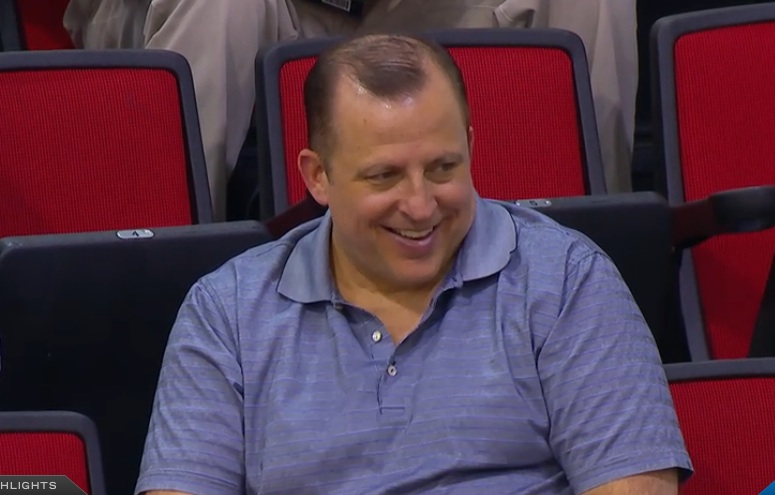
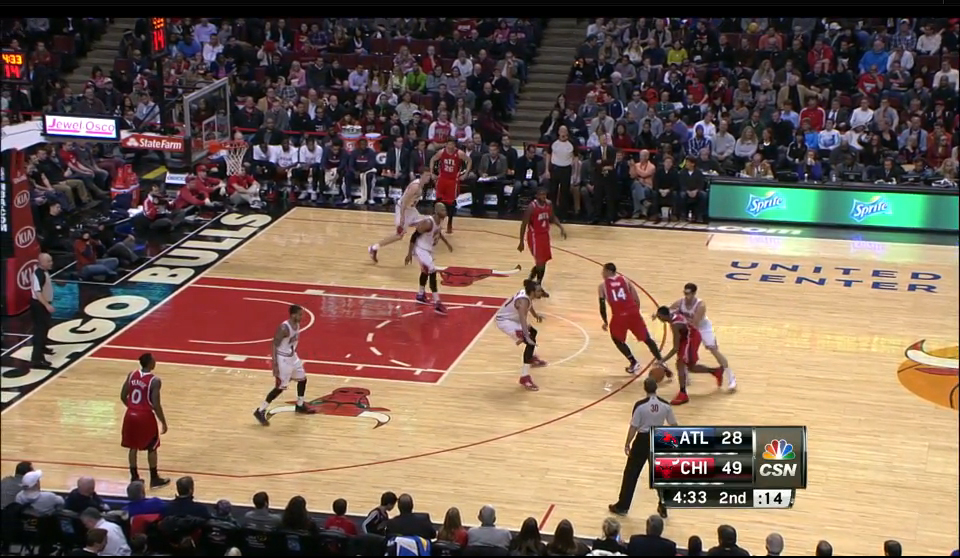
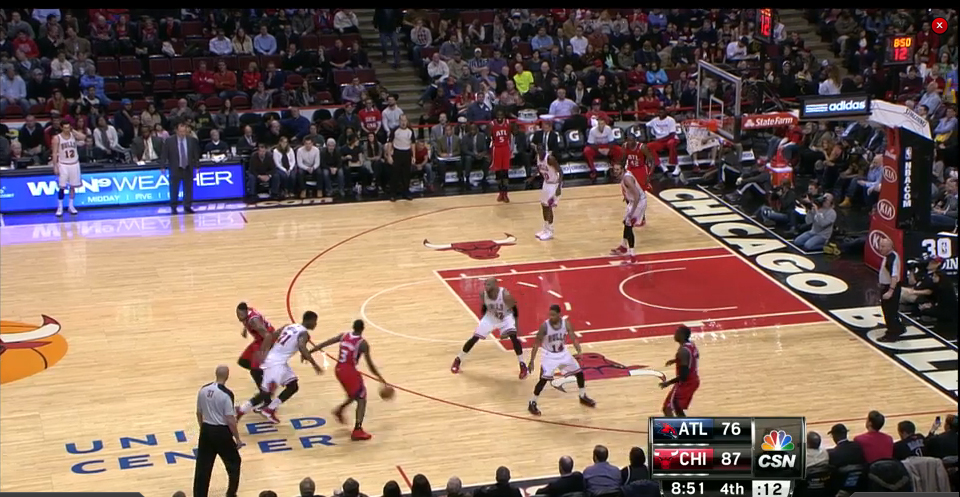

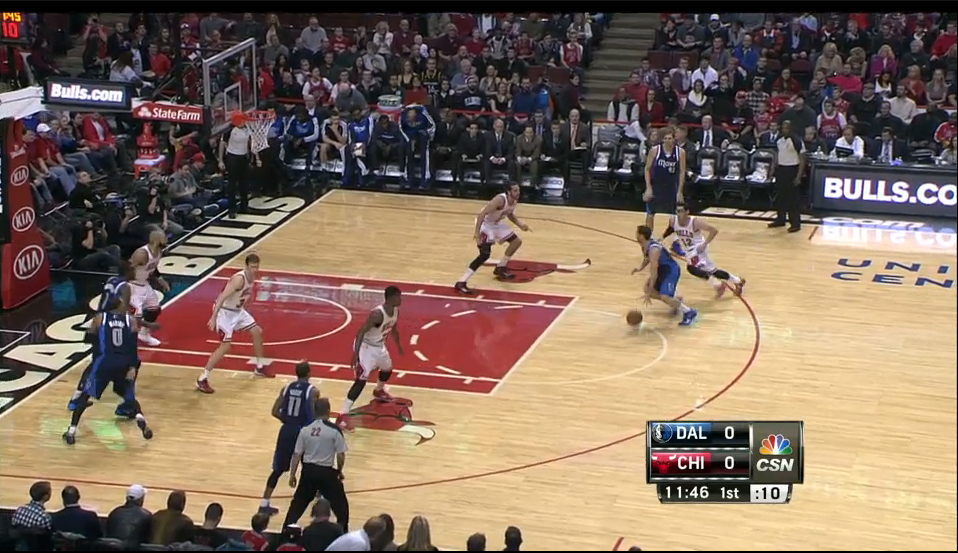
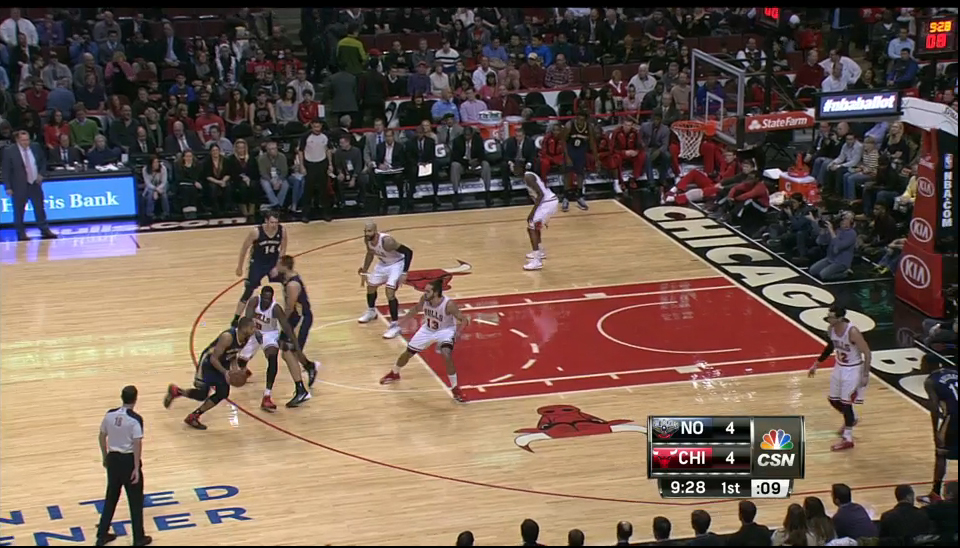

No comments yet.